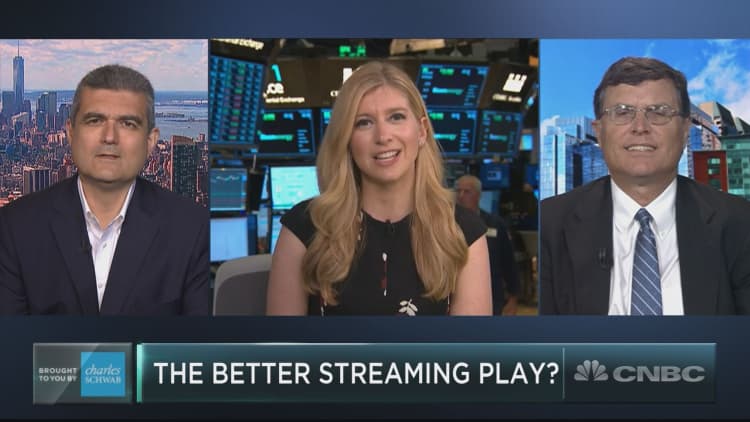China is now the world's second-highest spender on television shows after the U.S., with its annual expenditure hitting $10.9 billion in 2017.
It beat the U.K., with a spend of $10 billion, into second place, according to a report by analyst IHS Markit. Both countries' program spend is dwarfed by the U.S., which spent $58.3 billion on content.
The Chinese figure includes broadcast or linear TV as well as online services including Baidu, Alibaba and Tencent. Online platforms spent $4.5 billion on programing in 2017 and IHS Markit expects this to rise in 2018, beating the $6.4 billion linear TV stations spent on programming.
Baidu is the majority owner of Chinese platform iQiyi, which had 60 million subscribers at the end of February and went public on Nasdaq in March. Netflix, which had 130 million subscribers at the end of June, has provided some of its content to iQiyi so it can enter the Chinese market. Streaming services are now the main way younger audiences watch TV in the U.S., with 61 percent of 18 to 29-year-olds saying they use them, according to Pew Research.

As is the case for Netflix, Amazon and Hulu, original shows are important to Chinese streaming sites, with such content making up 49 percent of all Chinese programs in 2017. Producing content not available elsewhere encourages people to sign up and provides other commercial opportunities, according to IHS Markit Senior Research Analyst Kia Ling Teoh.
"Broadcasters and online platform companies are increasingly creating their own content, not only to lure paying subscribers, but also for merchandising, mobile game development and other new revenue streams," she said in an emailed statement.
But unlike Netflix, the Chinese companies rely more on advertising and sponsorship. "If the cost of content continues to surge, such aggressive investment will become unsustainable," Teoh added.
Acquired programming made up 46 percent of Chinese TV in 2017, with sports shows making up 5 percent. This is set to rise as Chinese consumers want more sports content, reflected in its rising ad spend during this year's World Cup soccer tournament. Commercials during and around the tournament increased overall ad spending in China by $835 million, according to media group Zenith.

